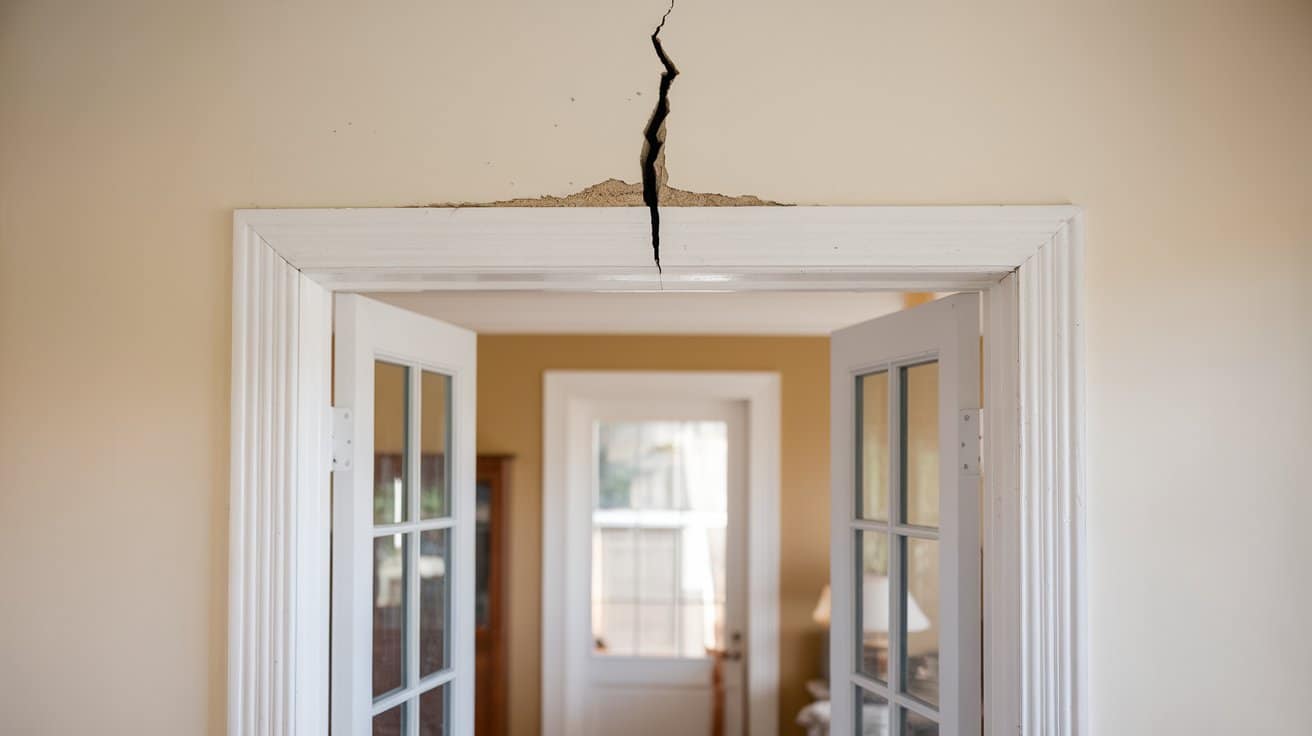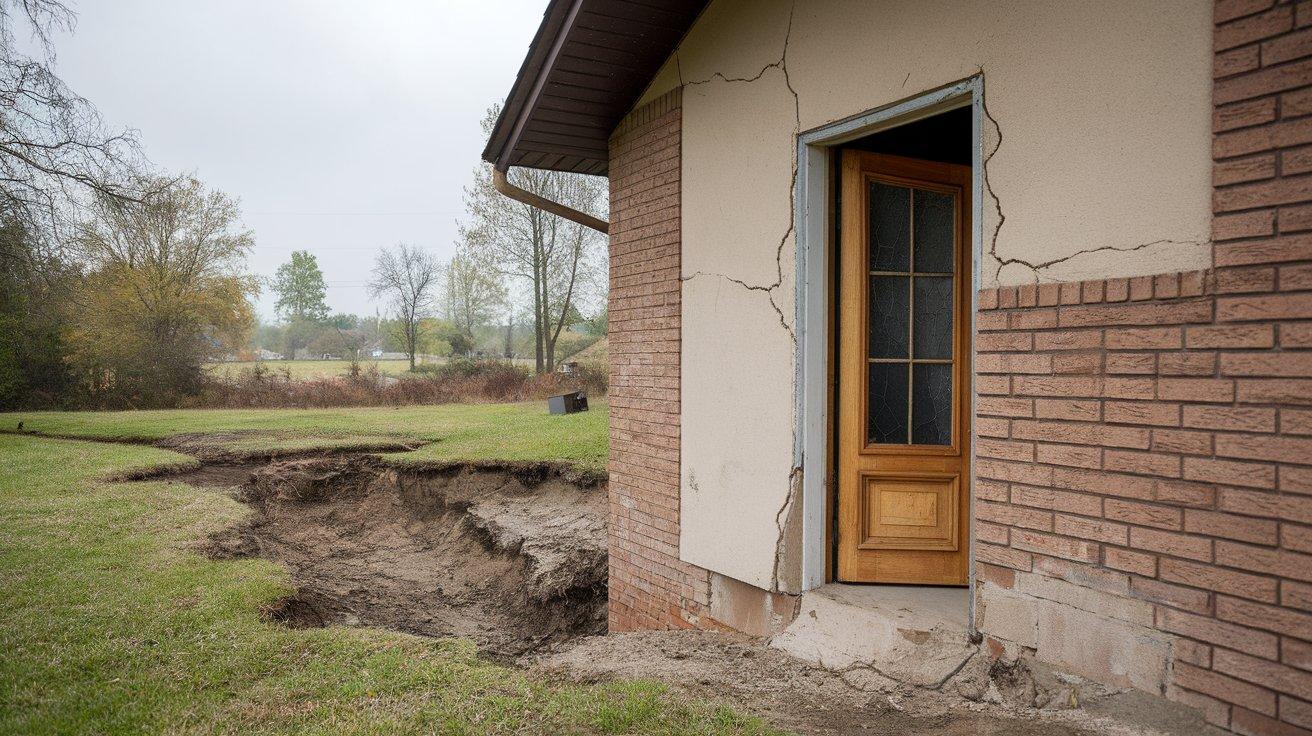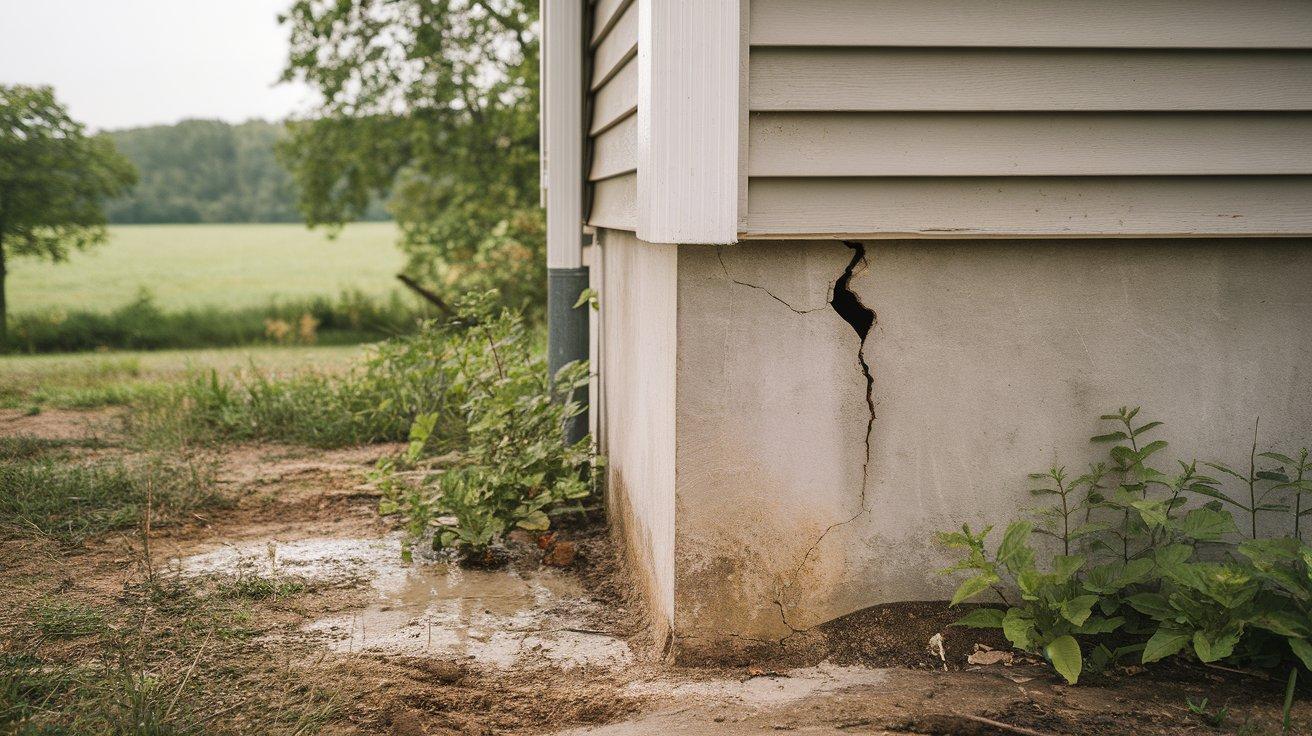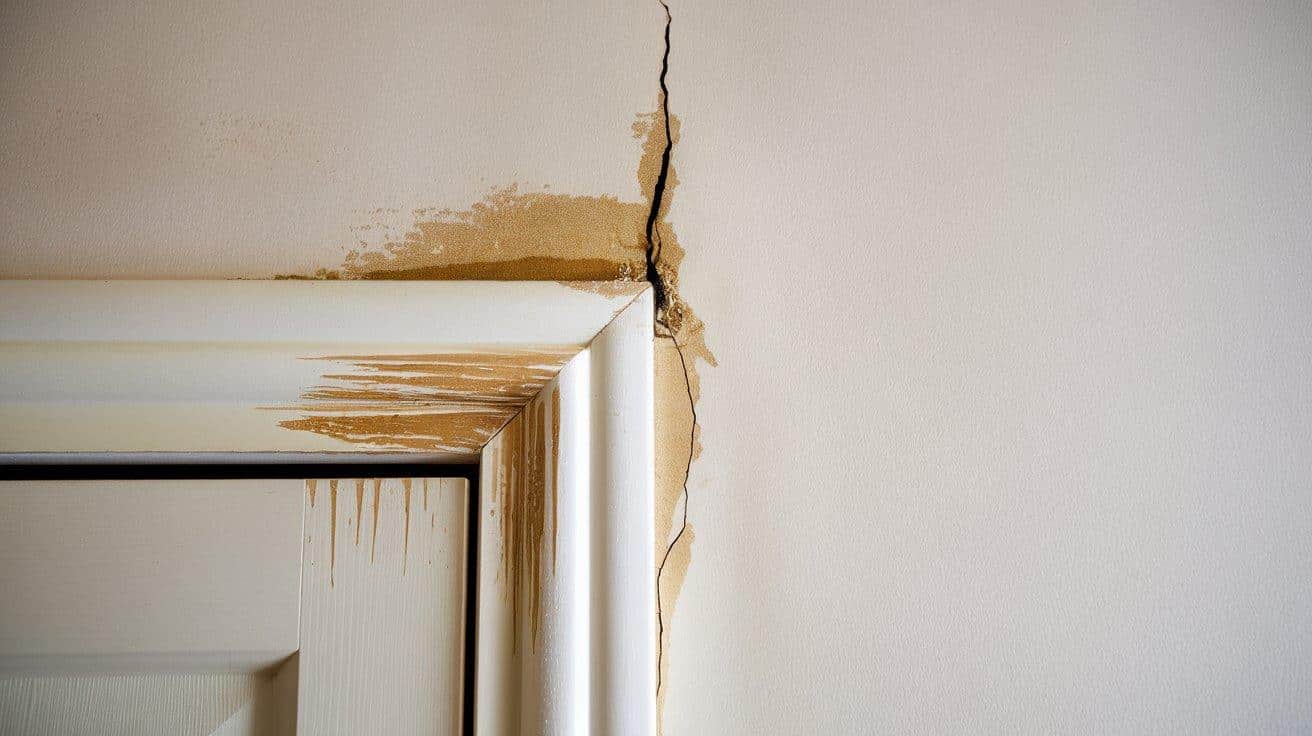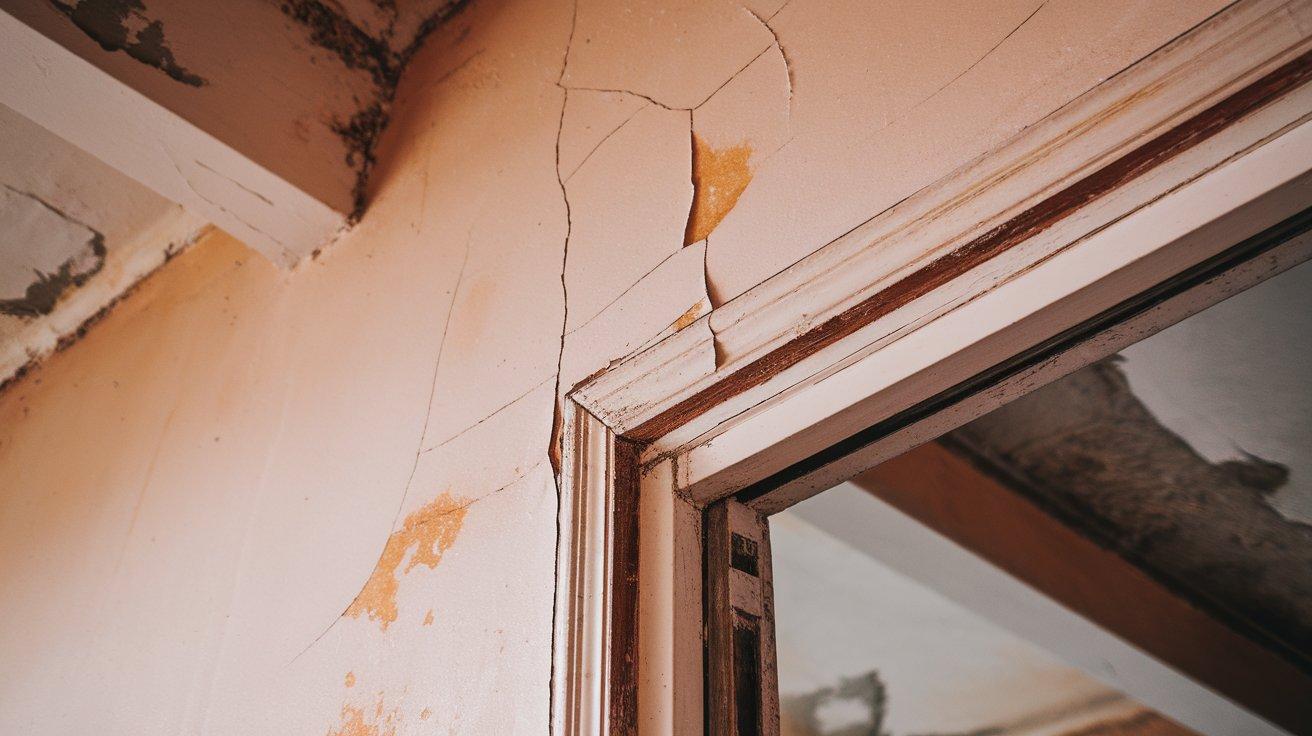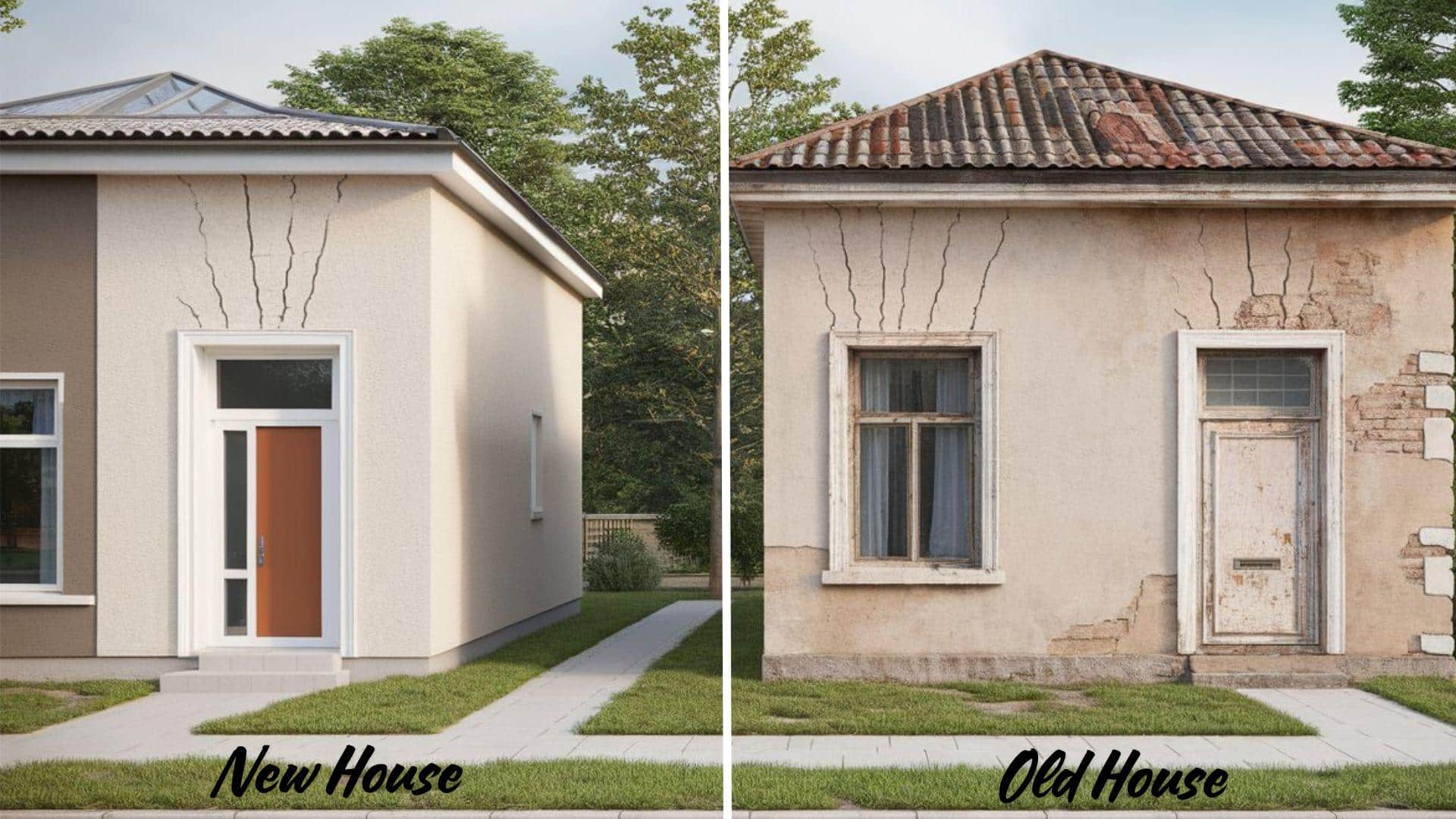Have you noticed a thin line running straight up from your door frame?
These vertical cracks above door frames worry many homeowners. They appear without warning and seem to grow over time.
Most people panic when they first spot these cracks. The fear of structural damage runs through their minds. However, not all vertical cracks signal serious problems.
Identifying the cause of the cracks is key to determining the right approach for repair. Some may need professional attention, while others can be addressed with basic home repairs.
I’ll guide you through identifying, understanding, and fixing these common household issues. Let’s analyze what your walls are trying to tell you.
What Are Vertical Cracks Above Door Frames?
Vertical cracks above door frames are straight lines that run upward from the top corners of door openings.
These cracks typically start at the door frame and extend toward the ceiling. They appear as thin, hairline fractures or wider gaps, depending on their cause.
These cracks form in the wall material directly above the door opening. They can occur in drywall, plaster, or other wall surfaces. The crack usually follows a straight vertical path but may sometimes branch out slightly.
Most vertical cracks measure between 1/16 inch to 1/4 inch in width. Hairline cracks are often cosmetic issues. Wider cracks may indicate more serious structural concerns that need a professional assessment.
The length of these cracks varies significantly. Some extend only a few inches from the door frame. Others can reach all the way to the ceiling, creating a visible line across the entire wall height.
Why Do Vertical Cracks Appear Above Door Frames?
Several factors contribute to vertical crack formation above door frames. Understanding these causes helps determine the appropriate repair approach.
1. Settling
New homes naturally settle as the foundation adjusts to soil conditions. This settling creates minor shifts throughout the structure.
Door frames act as weak points where stress concentrates, leading to crack formation above the opening.
2. Foundation Issues
Structural problems in the foundation create stress throughout the building.
Uneven settling or foundation movement puts pressure on weak points like door frames. These issues often show up as vertical cracks above openings first.
3. Moisture
Water damage weakens wall materials and causes them to lose structural integrity. Leaky roofs, plumbing problems, or high humidity levels contribute to crack formation.
The moisture makes drywall and plaster more susceptible to cracking under normal stress.
4. Temperature Changes
Seasonal temperature fluctuations cause building materials to expand and contract. Wood framing and drywall respond differently to these changes.
The repeated expansion and contraction cycles stress the wall material above the door frames.
Are Vertical Cracks Above Door Frames Common?
Yes, Vertical cracks above door frames are a common issue in both new and older homes, often appearing as a natural part of the building process.
The frequency depends on several factors, including home age, construction quality, and environmental conditions.
- New Construction Homes: Experience settling cracks within the first 2-3 years.
- Older Homes: Develop cracks due to natural aging and material deterioration.
- Climate Factors: Homes in areas with extreme temperature variations see more frequent cracking.
- Construction Quality: Better-built homes with proper headers and framing experience fewer cracks.
- Maintenance Level: Well-maintained homes with controlled moisture levels have reduced crack occurrence.
- Seasonal Patterns: Most cracks appear during winter months when heating systems create dry conditions.
Most vertical cracks are cosmetic, but if they grow or change in width, it’s important to monitor them closely and seek professional help if needed.
How to Repair Vertical Cracks Above Door Frames?
Repairing vertical cracks above door frames requires the right approach based on the crack size and cause. Most homeowners can handle minor cosmetic cracks with basic tools and materials. Larger or recurring cracks may need professional attention.
Tools and Materials Needed
Gathering the right supplies before starting ensures smooth repairs without interruptions. Having everything ready prevents trips to the store mid-project and helps maintain focus on proper technique.
| Item | Purpose |
|---|---|
| Putty knife | For cleaning debris and applying joint compound |
| Sandpaper (120-grit) | To smooth repair areas after drying |
| Vacuum cleaner | Removes dust and loose particles from cracks |
| Measuring tape | Helps assess crack width and length accurately |
| Joint compound | Fills cracks and creates a smooth surface |
| Self-adhesive mesh tape | Reinforces wider cracks for lasting repairs |
| Primer | Ensures paint adhesion over repaired areas |
| Matching paint | Provides a final finish that blends with the existing wall |
Step 1: Clean the Crack: Remove loose debris, dust, and old paint from the crack using a putty knife. Vacuum out the remaining particles to ensure good adhesion.
Step 2: Apply Mesh Tape: For cracks wider than 1/8 inch, apply self-adhesive mesh tape over the crack. This provides reinforcement and prevents future cracking.
Step 3: Fill with Joint Compound: Apply joint compound in thin coats, feathering edges for smooth blending. Allow each coat to dry completely before applying the next.
Step 4: Sand Smooth: Once fully dry, sand the repair area with fine-grit sandpaper until smooth. Remove all dust before painting.
Step 5: Prime and Paint: Apply primer to the repair area, then paint to match the surrounding wall. Use high-quality paint for best results.
Common Mistakes when Dealing with These Cracks
Many homeowners make errors when addressing vertical cracks above door frames. Avoiding these common errors saves time and money while ensuring proper repairs.
- Ignoring the Underlying Cause: Simply filling cracks without addressing the root problem leads to recurring issues.
- Using Wrong Materials: Applying rigid caulk or inappropriate fillers creates inflexible repairs that crack again.
- Painting Over Cracks: Covering cracks with paint provides only temporary concealment and prevents proper monitoring.
- Rushing the Repair: Attempting fixes before cracks stop growing results in failed repairs and wasted effort.
- DIY Complex Repairs: Tackling structural issues without proper knowledge can create safety hazards.
- Skipping Surface Preparation: Failing to clean and prepare crack surfaces reduces repair material adhesion.
- Overfilling Small Cracks: Using too much filler material creates visible bumps that show through the paint.
How to Prevent Future Vertical Cracks?
Implementing proper maintenance and environmental controls reduces crack formation and extends repair longevity.
- Maintain Consistent Indoor Humidity: Keep levels between 30-50% using humidifiers or dehumidifiers as needed. Stable moisture levels prevent excessive expansion and contraction of building materials.
- Control Temperature Fluctuations: Maintain steady heating and cooling systems. Avoid rapid temperature changes that stress wall materials and create crack-promoting conditions.
- Ensure Proper Drainage: Clean gutters regularly and direct water away from your home’s foundation. Poor drainage causes soil movement issues that lead to structural stress.
- Monitor Foundation Settlement: Check for new cracks or changes in existing ones regularly. Early detection allows for prompt, professional evaluation when needed.
- Use Flexible Caulk: Apply in areas prone to movement and seasonal shifts. This accommodates minor movements without cracking, providing longer-lasting repairs.
Conclusion
Vertical cracks above door frames are common household issues that most homeowners can manage.
By understanding the underlying causes, you can address these cracks appropriately, ensuring that you only apply repairs where necessary.
Prevention through proper maintenance proves more cost-effective than repeated repairs. Controlling moisture, temperature, and drainage reduces crack formation significantly. Regular monitoring helps catch problems early.
While most cracks aren’t structural, recognizing when they require expert evaluation is crucial for maintaining your home’s integrity. Trust your instincts when cracks seem concerning.
Have you noticed vertical cracks above your door frames? Share your experiences or ask questions in the comments below. Your insights might help other homeowners facing similar issues.
Frequently Asked Questions
Which Cracks Are Worse, Vertical or Horizontal?
Horizontal foundation cracks pose a greater danger than vertical ones. Water pressure and soil movement create structural risks that can affect building stability over time.
Are Vertical Cracks in A House Bad?
Single-block vertical cracks rarely cause concern. However, cracks extending through multiple bricks indicate overloading, excess weight, or foundation settlement requiring professional evaluation.
Can a House Collapse from Cracks?
Houses can collapse from severe structural cracks, but this happens gradually. Multiple factors contribute to collapse, not just cracks alone. Early professional assessment prevents serious problems.

